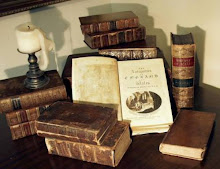Mr. Grafton places the origin, and current standard, of the modern footnote with Pierre Bayle in his Historical and Critical Dictionary of 1696. Mr. Grafton finds the form of citation expanded by Leopold von Ranke, and then polished by Edward Gibbon. The narrative of this book follows these authors, and a handful of others, through their classic works to highlight the development in style and purpose of footnotes.
Mr. Grafton likens footnotes to anthills, swarming with constructive and combative activity. Their purpose, he says, is to offer the empirical support for stories told and arguments presented. A text persuades, and the footnotes prove. As would be expected, this curious history stands upon a firm foundation of footnotes. Unfortunately, most of the footnotes in this book are dry, and Mr. Grafton's prose is usually abstruse, as in this sample:
But the glacial history of practice challenges the dramatic tale of seismic disciplinary changes traditionally proclaimed in prefaces and manifestos and later retold in many histories of historiography.Can anyone dispute that? Such sentences make it clear this book grew out of a dissertation, and would be better appreciated in an ivory tower than in our comfy chair. Noel Coward spoke for many an average reader who feels like footnotes are an interruption of the narrative when he said,
having to read a footnote resembles having to go downstairs to answer the door while in the midst of making love.Other critics contend that a text with extensive footnotes does not offer the reader the results of research so much as the paraphernalia of learning, producing a display meant to make the scholar appear learned. Voltaire, in particular, often expressed a strong distaste for scholarly details. In 1743, Gottlieb Wilhelm Rabener published a book which consisted entirely of footnotes, because he admittedly sought only fame and fortune:
one wins these not by writing one's own text but by commenting on those of others.While footnotes force scholars to dig deep into primary sources, there is no guarantee of the veracity of those sources. The history of a king written by a contemporary was as likely to contain myriad inaccuracies, since the author probably lacked insight into the motives of the king. Evidence, particularly in the history of the church, was regularly manipulated, as when Roman scholars, to meet the popular demand for the bones of martyrs, assembled skeletons from the remains in the catacombs, assigned them identities, and produced official documents to verify them. Often, as with the Donation of Constantine or the Letter of Aristeas, footnotes and the direct insertion of source material were put in the service of outright fraud. The most valuable research always includes a comparison of a variety of sources.
The demand for footnotes produces a paradox: one must write an original sentence and at the same time prove it has a source. Though detailed citations may be of extreme value in academic writing, we believe bibliographical references would serve in a work meant for public consumption. We can even appreciate the footnote that
retains obdurate nuggets of source material that refuse to be refined down.We prefer above all footnotes that are fun and broaden the main text, as those in Susanna Clarke's Jonathan Strange and Mr Norrell.
Mr. Grafton's best footnote comes on the last page of his book. It is a quote from Harry Belafonte's story of self-education, and leaves us with a laugh. He discovers footnotes while reading W.E.B. Du Bois, and wants to pursue the references.
I went to a library with a long list of books. The librarian said, 'That's too many, young man. You're going to have to cut it down.' I said, 'I can make it very easy. Just give me everything you got by Ibid.'


No comments:
Post a Comment